Research Areas
We develop numerical models and computational tools to better characterize and understand human interactions in the built and natural environments.
Highlighted Projects
People
Highlighted Publications
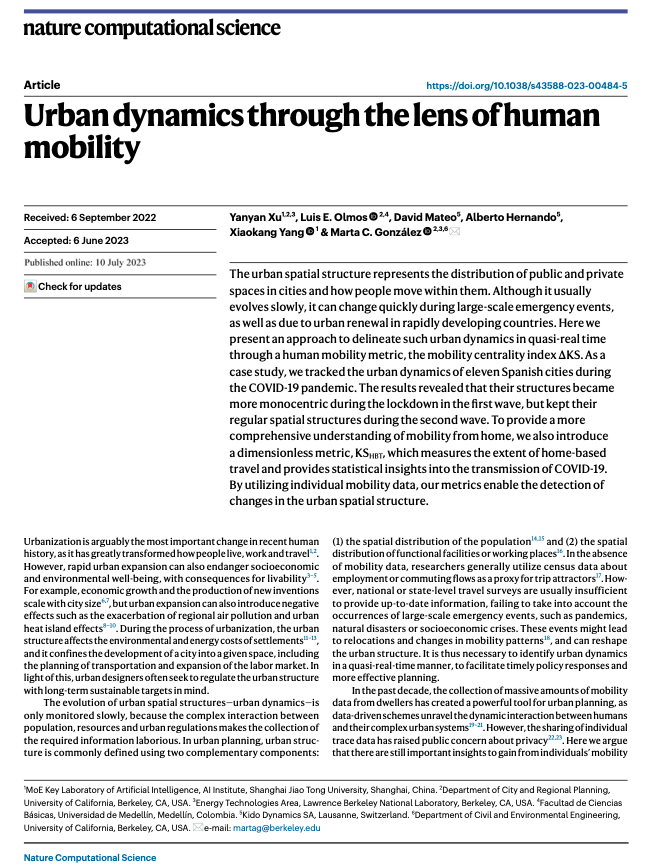
Urban Science
The urban spatial structure represents the distribution of public and private spaces in cities and how people move within them. Although it usually evolves slowly, it can change quickly during large-scale emergency events, as well as due to urban renewal in rapidly developing countries. Here we present an approach to delineate such urban dynamics in quasi-real time through a human mobility metric, the mobility centrality index ΔKS. As a case study, we tracked the urban dynamics of eleven Spanish cities during the COVID-19 pandemic. The results revealed that their structures became more monocentric during the lockdown in the first wave, but kept their regular spatial structures during the second wave. To provide a more comprehensive understanding of mobility from home, we also introduce a dimensionless metric, KSHBT, which measures the extent of home-based travel and provides statistical insights into the transmission of COVID-19.
Xu, Yanyan, et al. “Urban dynamics through the lens of human mobility.” Nature Computational Science 3 (2023): 611-620.
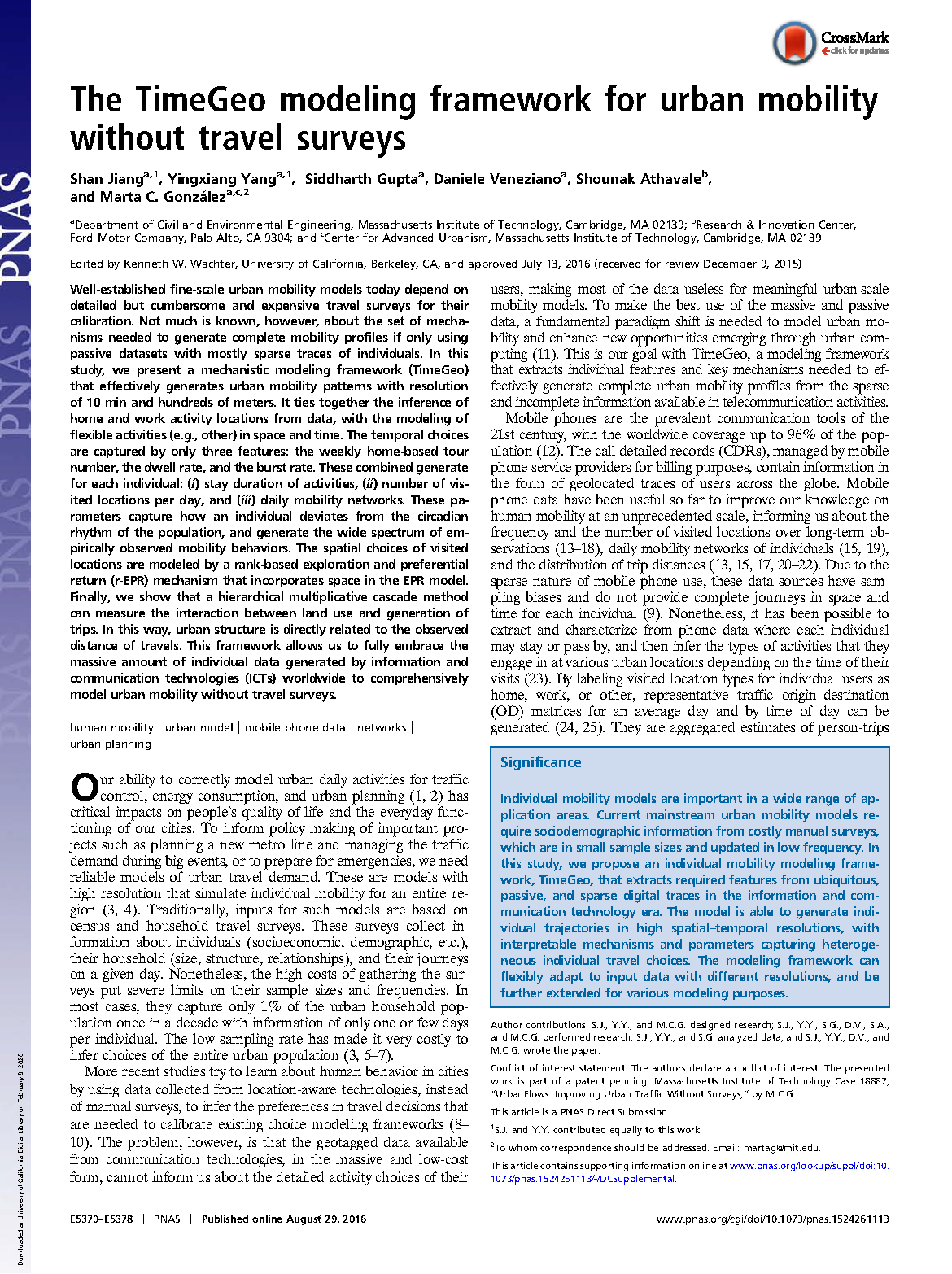
TimeGeo
Well-established fine-scale urban mobility models today depend on detailed but cumbersome and expensive travel surveys for their calibration. Not much is known, however, about the set of mechanisms needed to generate complete mobility profiles if only using passive datasets with mostly sparse traces of individuals. In this study, we present a mechanistic modeling framework (TimeGeo) that effectively generates urban mobility patterns with resolution of 10 min and hundreds of meters. This framework allows us to fully embrace the massive amount of individual data generated by information and communication technologies (ICTs) worldwide to comprehensively model urban mobility without travel surveys.
Jiang, Shan, et al. “The TimeGeo modeling framework for urban mobility without travel surveys.” Proceedings of the National Academy of Sciences 113.37 (2016): E5370-E5378.
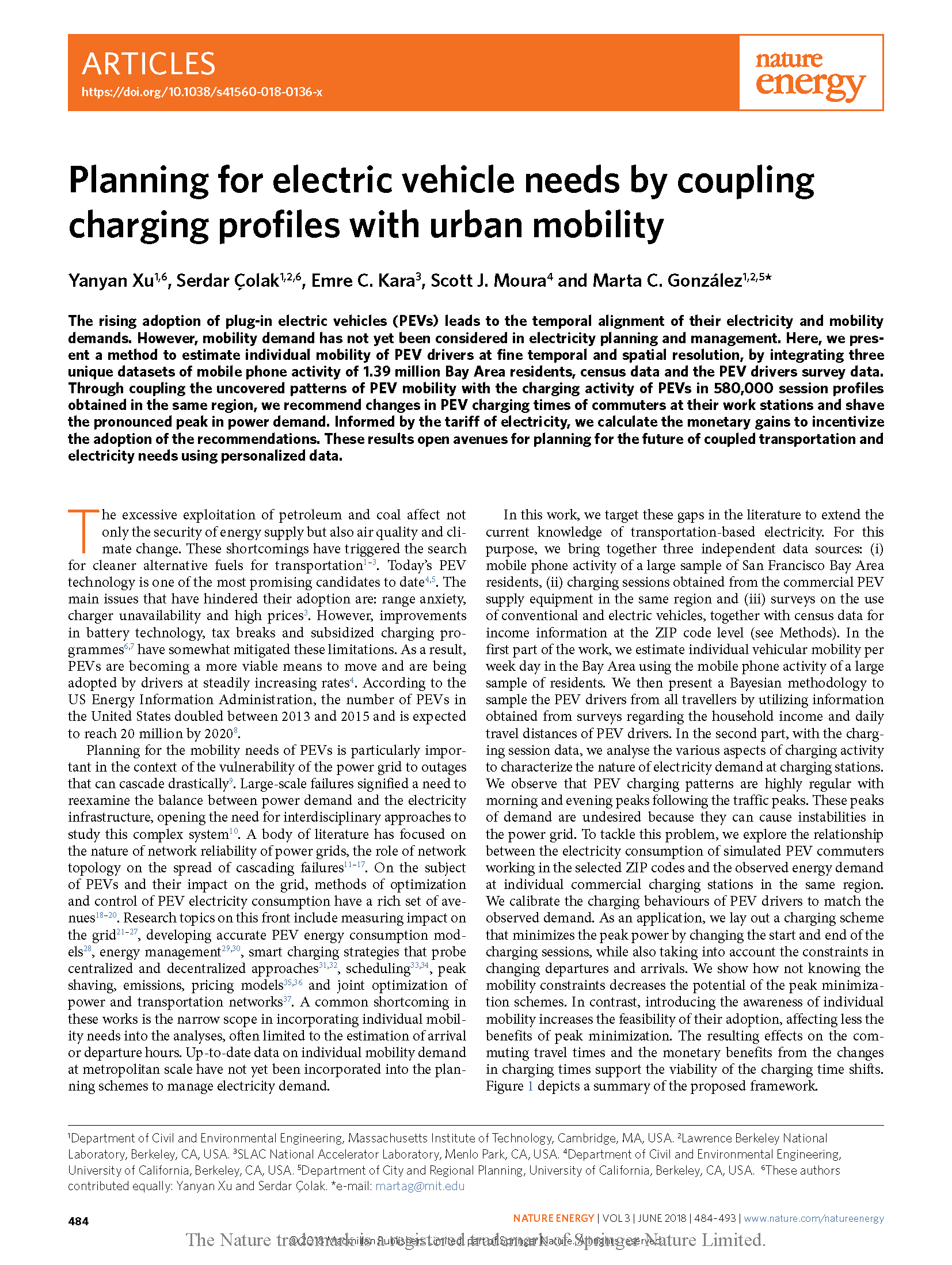
Electric Vehicle Charging
The rising adoption of plug-in electric vehicles (PEVs) leads to the temporal alignment of their electricity and mobility demands. However, mobility demand has not yet been considered in electricity planning and management. Here, we present a method to estimate individual mobility of PEV drivers at fine temporal and spatial resolution, by integrating three unique datasets of mobile phone activity of 1.39 million Bay Area residents, census data and the PEV drivers survey data. Through coupling the uncovered patterns of PEV mobility with the charging activity of PEVs in 580,000 session profiles obtained in the same region, we recommend changes in PEV charging times of commuters at their work stations and shave the pronounced peak in power demand. These results open avenues for planning for the future of coupled transportation and electricity needs using personalized data.
Xu, Yanyan, et al. “Planning for electric vehicle needs by coupling charging profiles with urban mobility.” Nature Energy 3.6 (2018): 484-493.
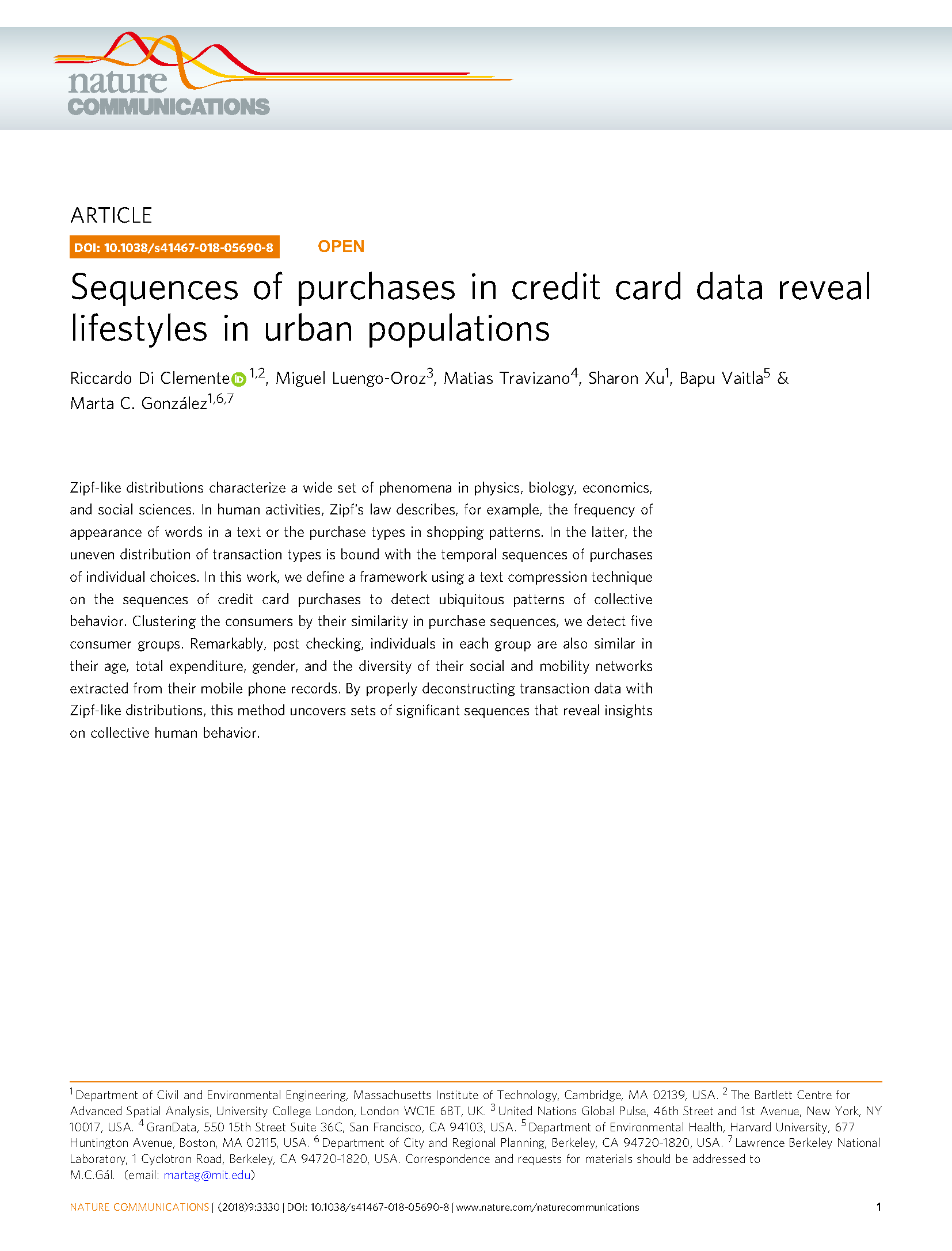
Human Lifestyle
In human activities, Zipf’s law describes, for example, the frequency of appearance of words in a text or the purchase types in shopping patterns. In the latter, the uneven distribution of transaction types is bound with the temporal sequences of purchases of individual choices. In this work, we define a framework using a text compression technique on the sequences of credit card purchases to detect ubiquitous patterns of collective behavior. Clustering the consumers by their similarity in purchase sequences, we detect five consumer groups. Remarkably, post checking, individuals in each group are also similar in their age, total expenditure, gender, and the diversity of their social and mobility networks extracted from their mobile phone records. By properly deconstructing transaction data with Zipf-like distributions, this method uncovers sets of significant sequences that reveal insights on collective human behavior.
Di Clemente, Riccardo, et al. “Sequences of purchases in credit card data reveal lifestyles in urban populations.” Nature communications 9.1 (2018): 1-8.
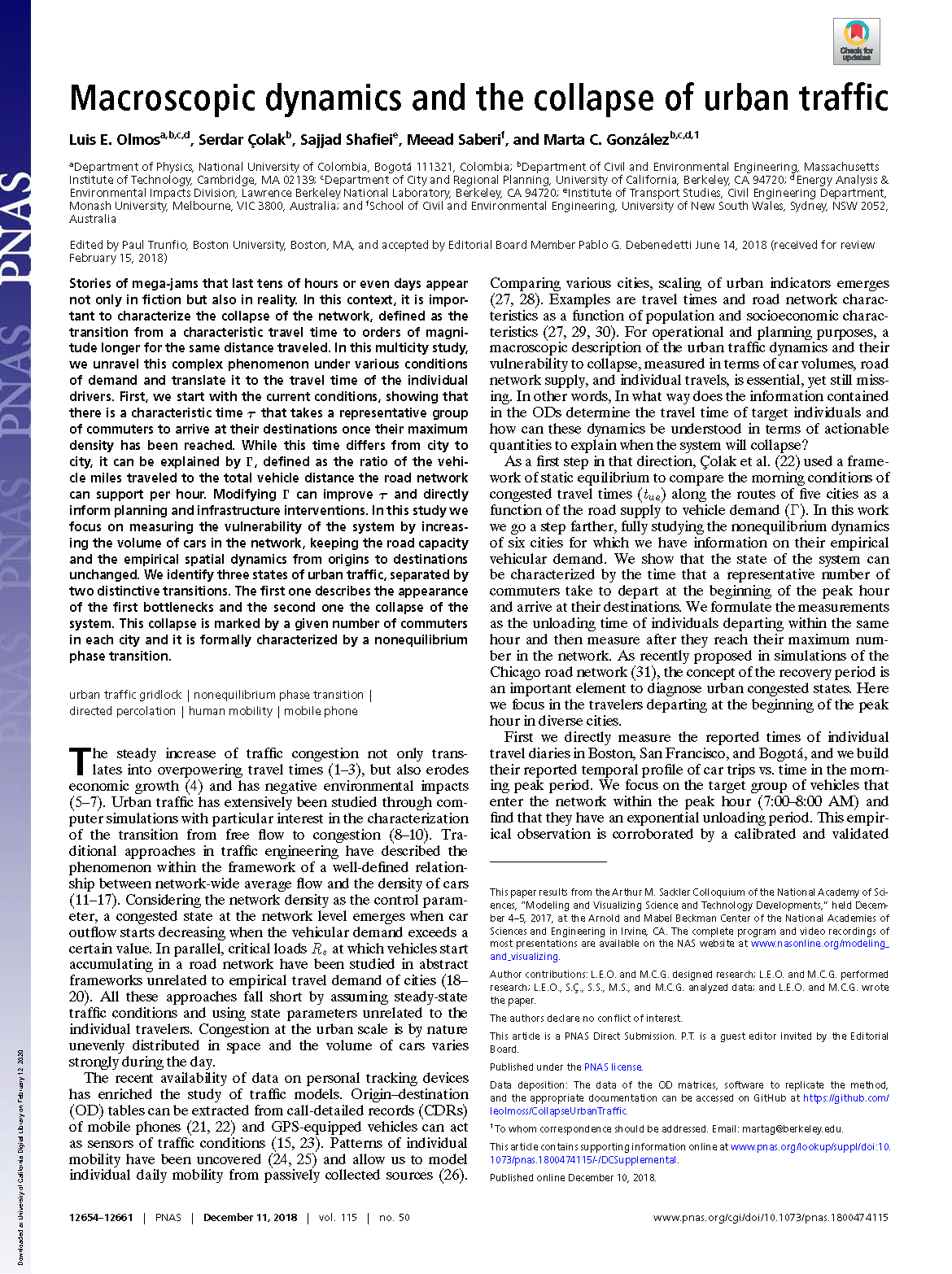
Traffic Congestion
Stories of mega-jams that last tens of hours or even days appear not only in fiction but also in reality. In this context, it is important to characterize the collapse of the network, defined as the transition from a characteristic travel time to orders of magnitude longer for the same distance traveled. In this study we focus on measuring the vulnerability of the system by increasing the volume of cars in the network, keeping the road capacity and the empirical spatial dynamics from origins to destinations unchanged. We identify three states of urban traffic, separated by two distinctive transitions. The first one describes the appearance of the first bottlenecks and the second one the collapse of the system. This collapse is marked by a given number of commuters in each city and it is formally characterized by a nonequilibrium phase transition.
Olmos, Luis E., et al. “Macroscopic dynamics and the collapse of urban traffic.” Proceedings of the National Academy of Sciences 115.50 (2018): 12654-12661.
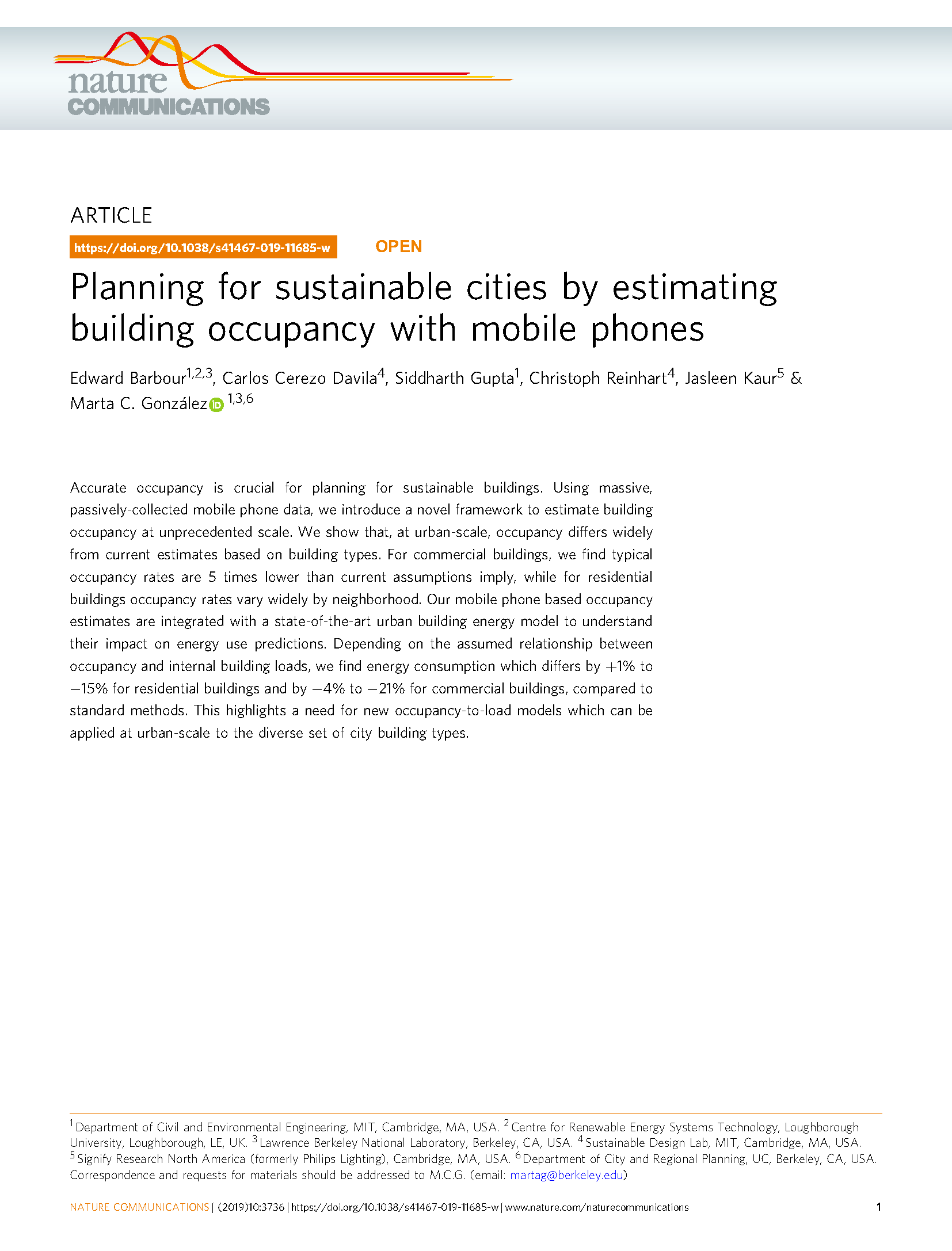
Building Energy
Accurate occupancy is crucial for planning for sustainable buildings. Using massive, passively-collected mobile phone data, we introduce a novel framework to estimate building occupancy at unprecedented scale. We show that, at urban-scale, occupancy differs widely from current estimates based on building types. For commercial buildings, we find typical occupancy rates are 5 times lower than current assumptions imply, while for residential buildings occupancy rates vary widely by neighborhood. Our mobile phone based occupancy estimates are integrated with a state-of-the-art urban building energy model to understand their impact on energy use predictions.
Barbour, Edward, et al. “Planning for sustainable cities by estimating building occupancy with mobile phones.” Nature communications 10.1 (2019): 1-10.







